While we still have a long way to go in ensuring women are well represented in leadership positions, the future has never looked brighter. We have more women than ever in key leadership positions in companies, on boards, and in government. Women are also earning more bachelors degrees than ever before.
Why is it important?
Beyond the obvious benefits to current and future female leaders of having mentors, advocates and role models at the highest levels, Catalyst found that companies with more female leaders in management and on boards had better financial performance.
1. 100% of S&P 500 boards have at least one female director
According to Spencer Stuart’s 2021 Board Index, 100% of S&P 500 boards now have female board representation, compared to 91% 10 years ago. In addition to that, nearly three quarters have 3 or more female directors.
Board diversity overall is also on the rise, with 72% of new independent directors from historically under-represented groups in 2021.
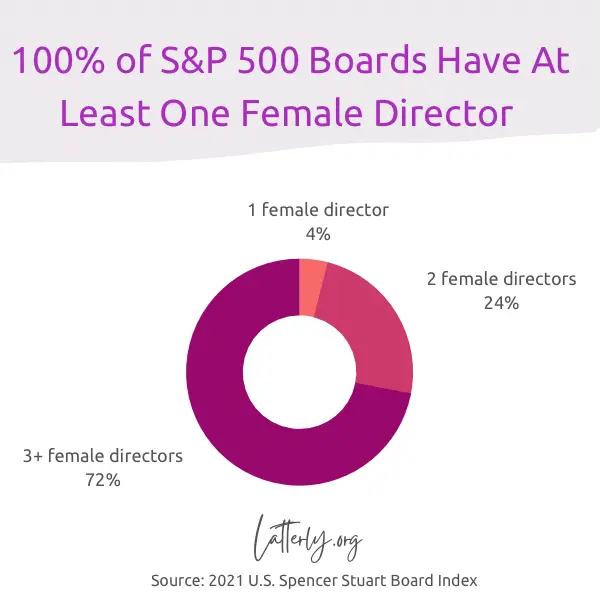
2. 30% of all S&P 500 Directors Are Women (The Most Ever)
The percentage of female directors at S&P 500 companies nearly doubled to 30% from 16% ten years ago. Boards are focused on increasing gender diversity for a variety of reasons and it shows.
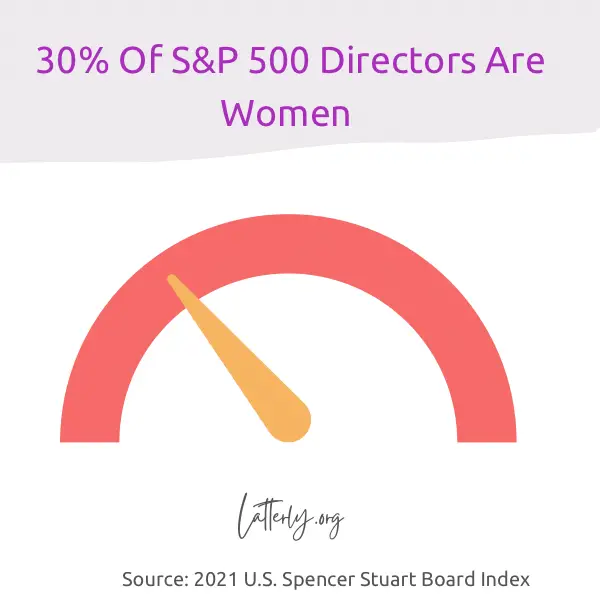
3. Women’s Representation Has Increased At Every Leadership Level
In the last 5 years, women are a larger portion of the pie at every leadership level. This is good news for all employees since, according to McKinsey & Company’s Women in the Workplace 2021 study, women managers are taking more action to support their teams. Including helping employees manage workloads and checking in on their overall wellbeing.
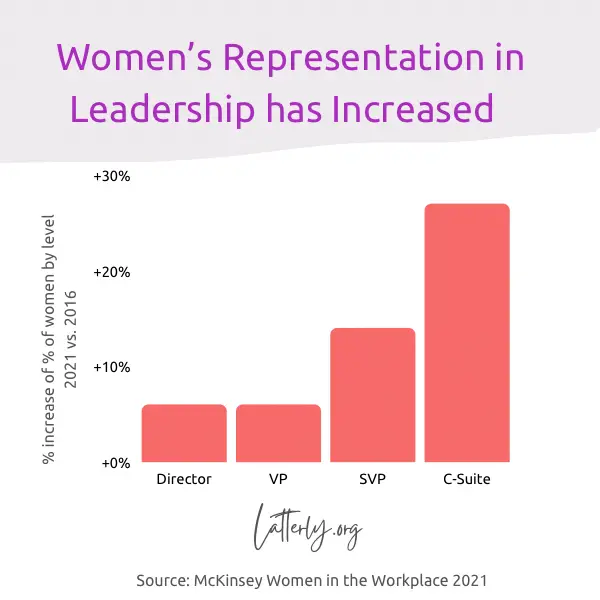
4. Women’s Earnings are Only 82% of Men’s, but the Pay Gap Continues to Reduce
According to the U.S. Bureau of Labor Statistics, women’s earnings as a percentage of men’s is the highest its ever been at 82%.
While we clearly need further improvement (and the gains are excruciatingly slow), the good news is that, according to Pew Research Center, Women ages 25 to 34 earned 93 cents for every dollar a man in the same age group earned on average.
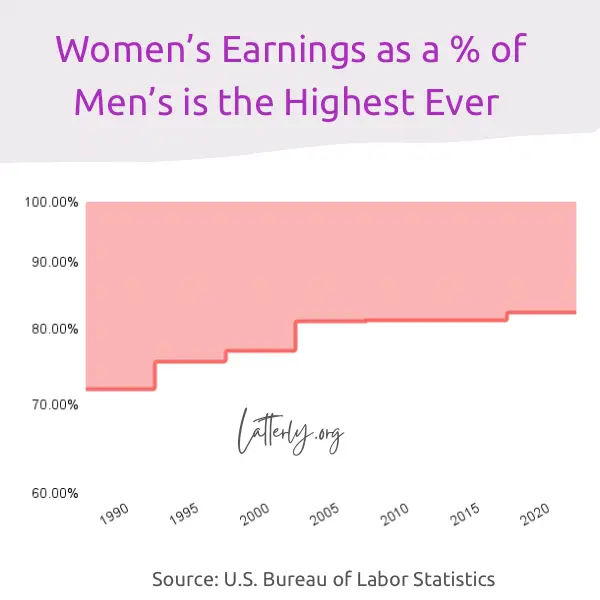
5. Women Make Up Over a Quarter of U.S. Congress’ Membership
Women make up over a quarter of all members of the U.S. Congress, the highest percentage in U.S. history according to the Center for American Women and Politics. This represents a 50% increase from 10 years ago.
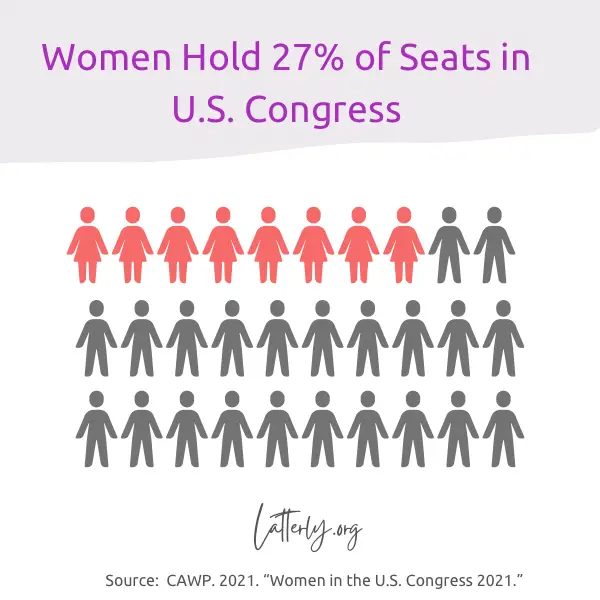
6. There are 10 Countries where the Average Board Is Made up of more than 1/3 Women
According to BoardEx’s Global Gender Balance Report, 10 countries have average boards made up of over 1/3 women. Most of these are in Europe, and Europe-wide female representation averages 36%.
BoardEx also reports that there is evidence that having more women in board-level positions improves non-board gender balance, making it all the more important.
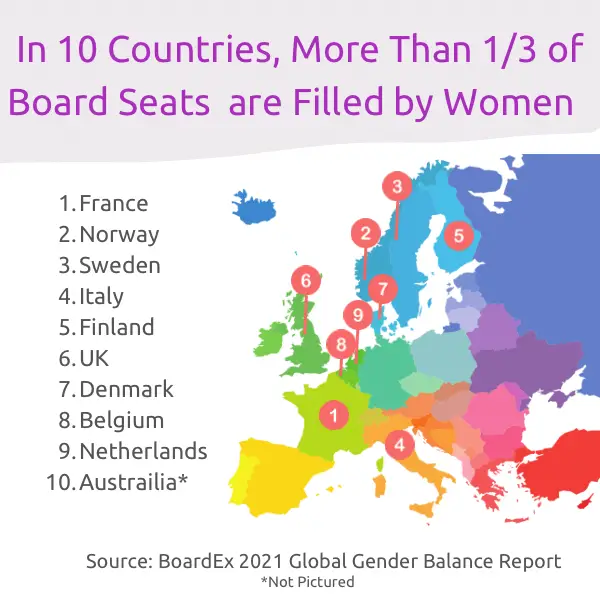
7. U.S. Women are Now Earning More Four Year Degrees Than Ever, and More Than U.S. Men
According to the U.S. Census Bureau, a full 38% of women over age 25 have a 4 year degree. This is promising as we push for more female leadership at every level.
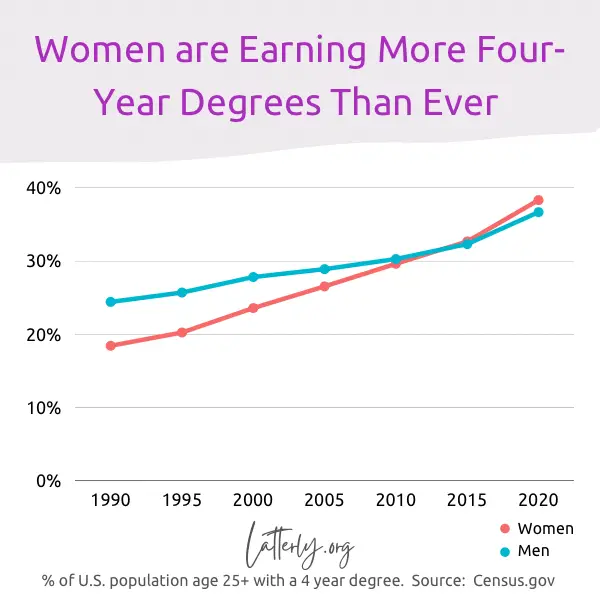
Women In Leadership
Women have made important gains in representation in many leadership areas. However, there is plenty still to work on. Only 6% of Fortune 500 CEO positions are held by women, and the pay gap continues to close at a frustratingly slow pace.
It is up to each of us to encourage each other and look for opportunities to mentor and help future female leaders find the courage and opportunities needed for career progress. Thank you to those currently leading the way.

Feel free to use any of the images in this blog post with a link back to this post.

